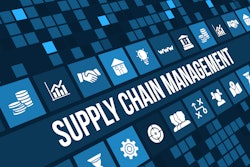
Conversations around technology in the logistics industry invariably involve the net effect on employees. Usually, the relationship between tech and workers is seen as adversarial – tech versus employees. The perception is: the more technology introduced, the fewer employees an operation will need.
The relationship is far more nuanced than that, however, as tech has the capacity to improve workplace safety and efficiency, provide opportunities for advancement and upskilling, and make better connections between job seekers and good-fit jobs. Here’s a look at how tech AND employees can work together in logistics.
Technology and Job Displacement
Countless articles have been written on the subject of technology and job displacement, dating back at least to the beginnings of the Industrial Revolution, so the subject isn’t new. While it’s true when the latest technology, such as robotic pickers and automated forklifts, results in a reduction of jobs, overall job numbers in the economy remain strong.
Automation – which in at least one article in 2013 was supposed to reduce U.S. employment by 47% - hasn’t resulted in large-scale unemployment. As of July 2024, the U.S. unemployment rate is 4.3%, one of the lowest in decades despite technology being adopted in nearly every industry at an ever-increasing rate.
Changing Employment Types
What technology has done in the logistics industry is change the nature of work being done by employees. Machines are doing more of the repetitive tasks and those more likely to cause injury, and employees are being used more for supervisory roles and equipment operation, jobs often described as more interesting or fulfilling. The use of automation allows tasks to be broken down into simpler parts (de-skilling), meaning for jobs requiring human intervention, less training is necessary and often employers can hire temporary staff for these roles.
Thus, automation brings about a certain employment dichotomy – roles for skilled, supervisory employees and jobs for unskilled, possibly temporary staff – but not so many positions for the semi-skilled middle. Overall, workplaces are safer and processes are more efficient, allowing businesses to keep up with the ever-increasing demand for quick delivery of e-commerce goods and B2B shipments.
Technology in Recruiting
One area in which technology, especially artificial intelligence, is making an outsized impact is recruiting. Artificial intelligence is a technological tool trained on massive data sets. By observing how humans write, speak, and reason, it develops its own ability to recognize speech, identify patterns and make decisions. It can be used as a standalone technology, such as Open AI’s ChatGPT or Google’s Genesis, or it can come baked-in to recruiting software tools.
According to a survey by HR industry organization SHRM, “Nearly half of the surveyed HR professionals say that using AI to support HR has become somewhat or much more of a priority” in the 12 months following January 2023. AI is now being used by human resources professionals to craft job descriptions, sift through job applications, and automatically respond to applicants.
Benefits of AI in Recruiting
AI can free up HR professionals to spend more time face-to-face with candidates, resulting in better hires. Some AI-based recruiting tools can identify missing skills from an otherwise promising candidate and provide resources for upskilling them.
The upskilling component also can be used to retrain and promote existing employees. Given that “job growth” was cited as the most important factor in career advancement by 79% of respondents in a McKinsey study of frontline workers, it is clear that efforts – especially those utilizing AI - to build new skills among workers are valuable tools for promoting employee retention.
Tech as an Aid to Employees
As mentioned, automation in a warehouse can help protect workers from on-the-job injuries and reduce the boredom associated with repetitive tasks. It can also provide motivation to pursue additional training as fewer lower-skilled positions are available.
Even before coming on board, however, technology holds benefits for job seekers. Employment and staffing apps make looking for work more convenient. AI-based recruiting tools can use skills-matching technology to identify workers who can do the job even if they haven’t been formally employed in that role before. This capability helps reduce bias and makes better matches, identifying promising candidates who might have been overlooked through traditional recruitment methods. By improving the fit between candidates and jobs, AI can help reduce employee frustration that leads to turnover.
Third-party Tech Tools Helping Employers
Warehouse operators can benefit from tech tools being used by other organizations. Staffing companies that have adopted apps for communicating with candidates are able to quickly fill orders for temporary staff. Our team recently enhanced the app that links clients and workers.
This technology allows workers to make on-the-fly changes to their availability, meaning staffing company recruiters know in real time which candidates can be scheduled. Apps, combined with the expertise of human recruiters, can help match customers’ needs with staff that have the necessary skills.
The Human Side of Technology
With all the pros and cons of technology in the logistics industry, there’s no question that the human element will always remain a vital part of the equation. People will always do business with people.
As equipment makes it faster and more efficient to accomplish certain jobs, humans are needed to decide which tasks need to be done. As companies grow and expand into new areas of business, humans will need to figure out how to manage the new workflows that come with it. Technology can help make better matches between job applicants and open positions. Hiring managers can spend more time talking face-to-face with candidates rather than poring over piles of resumes.
Technology isn’t all positive or all negative. It’s a multi-faceted, powerful set of tools that drives the modern world. It can be used to strengthen the bottom line, and it can also be used to enhance the human experience of work. Deciding how to balance those goals is a key aspect of business management today and in the future.



















![Pros To Know 2026 [color]](https://img.sdcexec.com/mindful/acbm/workspaces/default/uploads/2025/08/prostoknow-2026-color.mduFvhpgMk.png?ar=16%3A9&auto=format%2Ccompress&bg=fff&fill-color=fff&fit=fill&h=135&q=70&w=240)